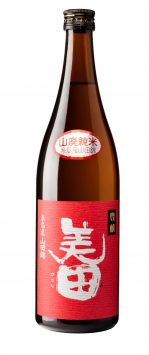World Sake Day is less than two weeks away and to get the party started we’re taking an in-depth look into this exciting category with Japanese Portfolio Manager, Jamie Graves!
This week we’re breaking down what’s in the bottle, the major styles of sake, and how to sell them in your bar or restaurant.
This is the first part of our series Demystifying the Delicious, view Part 2 and Part 3.
In the past several years, sake and the spirits of Japan have gone from unusual novelties to an essential category for the American drinker. There has never before been a greater selection of premium sake available in the US, and its popularity grows year over year.
Partially, that is due to the ever-increasing number of restaurants specializing in all types of Japanese cuisine, expanding beyond sushi to rowdy izakaya pubs, yakitori skewers, and even rarified kaiseki tasting menus, but more Americans are choosing this low-in-acid, high-in-umami drink as their evening beverage of choice regardless of what they’re eating.
In addition, Tokyo has become the most visited city in the world, recently surpassing Paris. The number of people who have experienced Japan’s food culture directly has exploded and interest in Japanese ingredients and techniques has never been higher. Ingredients like dashi stock and miso have been sneaking into classically French and American restaurants and sake has followed suit.
Despite its growing popularity, sake remains a mystery to even experienced beverage professionals, and so we’re thrilled to be able to demystify this delicious, varied drink as well as share it with an even wider audience!
SAKE 101: WHAT’S IN THE BOTTLE?
Here we cover the basics of sake including major styles and categories and introduce several iconic examples of each. This primer introduces all the main styles, from crushable Junmai, to the elegance of Daiginjo to the deep, expressive character of Yamahai and Kimoto.
SAKE 101: HOW TO SELL SAKE IN YOUR BAR OR RESTAURANT
With a generally softer character than wine, sake is remarkably versatile for pairing, able to match with ingredients notoriously tricky for wine like asparagus and artichoke. As American chefs employ Japanese ingredients like dashi and miso more often, sake has been following suit and finding its way into serious beverage programs around the country. In the video below, we discuss ways to get your guests excited about the wide world of sake.
THE SAKES
Tokubetsu Junmai Sake, ‘The Gentleman’, Bijofu
- Light, fresh and delicious
- Notes of passion fruit and freshly cut mint leaves
- Local Matsuyama Mii rice milled to 60%
Defined and precise, the Bijofu Junmai is a sake with zip, spice, and drinkability. Not a heavy or earthy Junmai, this sake is light and fresh, faint notes of passion fruit and freshly crushed mint leaves. Matsuyama Mii rice milled to 60%.

Junmai Sake, ‘Eastern Legend’, Azumaichi
- Rich and full, bursting with umami.
- Deep bass notes of soy sauce mingle with grains and freshly cut herbs.
- Made from Yamada Nishiki rice milled to 64%.
Junmai sake tend to be quiet and restrained, but like everything Azumaichi makes this has a fascinating complexity wrapped in a delicious bundle. Gochoda Brewery is one of the world’s only “domaine style” sake breweries as they grow all of their own high-quality rice themselves, on their own fields, before switching to brewing.

Junmai Ginjo Sake, ‘Pride of the Seashore’, Isojiman
- Lively and full bodied
- Notes of white peaches and freshly cut herbs
- Heirloom Bizen Omachi from Okayama rice milled to 55%
- Fermented with Isojiman’s original in house yeast with distinctive saline quality
A lively and bracing sake, full-bodied and assertive. Initial fruit notes of white peach balanced by darker shades of fresh cut herbs and a definitive saline finish that makes it an ideal pairing for fresh seafood and a knockout pairing for freshly cracked oysters. Made from heirloom Bizen Omachi rice milled to 55%.

Junmai Muroka Genshu Bodaimoto, ‘Regal Hawk’, Takacho
- Made using the historic “bodaimoto” starter batch method
- Complex range of fruit and earthy notes
- Rich and sweet with distinctive sour acidity
- Hinohikari rice milled to 70%
Bodaimoto is an ancient sake method for making a starter for sake originated by Buddhist monks over 700 years ago but rarely used since the 1700s. In recent years Yucho Brewery has revived the process working in tandem with the same Buddhist temple that originated it, letting a rice-water mixture pick up the unique microbes to the temple than transferring to the brewery as a starter for this old-school sake. Rich and sweet flavor of tart apples is balanced by a sour acidity distinctive to this style. A singular expression that shows off the true diversity and potential of sake making.
Hinohikari rice milled to 70%.

Yamahai Junmai Sake, ‘Pastoral Beauty’, Hojo Biden
- Bold style meant to pair with rich local Kyushu cuisine
- Notes of honey, almonds and vanilla
- Yamada Nishiki rice milled to 70%
The Hojo Biden Yamahai Junmai is a unique expression from a great Kyushu brewery, a bold sake designed to match the rich flavors of the local Fukuoka cuisine. Brewed a touch sweeter than a common sake, the off dry flavor is balanced by a stronger alcohol presence of 16-17% and higher than average acid from the yamahai brewing process. The labor intensive and time consuming yamahai process also contributes a distinctive creaminess that leaps out.
Nose of honey, almonds and vanilla, and the sweetness and acid give it a depth and body to stand up to rich cuisine like grilled mackerel, miso marinated pork loin or spicy hot pot.

Sake, ‘Classic’, Kirinzan
- Takes the concept of ‘everyday sake ‘ to new heights
- Dry, clean, light, notes of hazelnut and toasted rice.
- Can be served chilled, room temp or warmed
- Gohyaku Mangoku and Koshi Ibuki rice milled to 65%
While breweries love to showcase their premium ginjo styles, Kirinzan takes immense pride in their entry level ‘futsu-shu’ meant for everyday drinking. They use Gohyaku Mangoku and Koshi Ibuki sake rice polished to 65%, beyond requirements for even the premium honjozo grade. All rice is sourced directly from small farmers in the local agricultural cooperative, none farther than five miles from the brewery. Made in the house style, it is dry, clean, light bodied, well balanced. Notes of hazelnut and toasted rice make it excellent both chilled or gently warmed.








